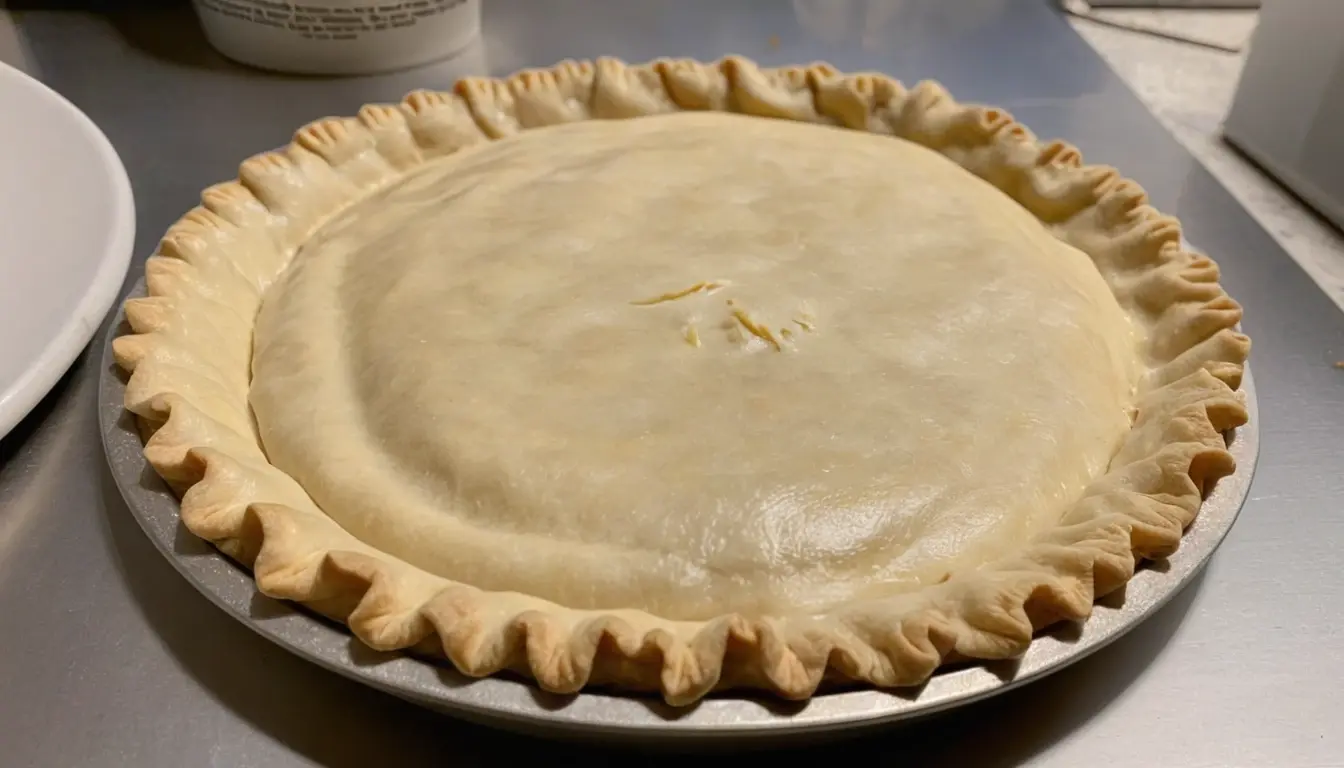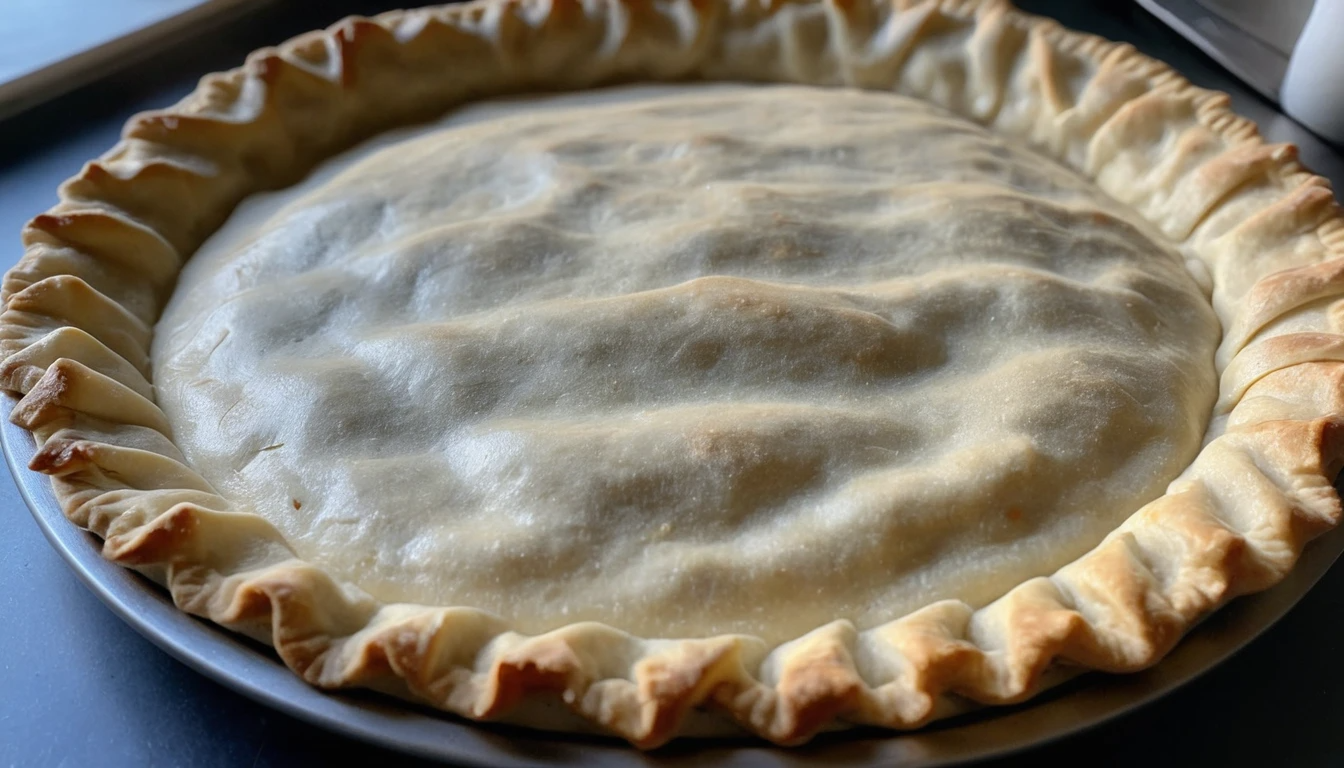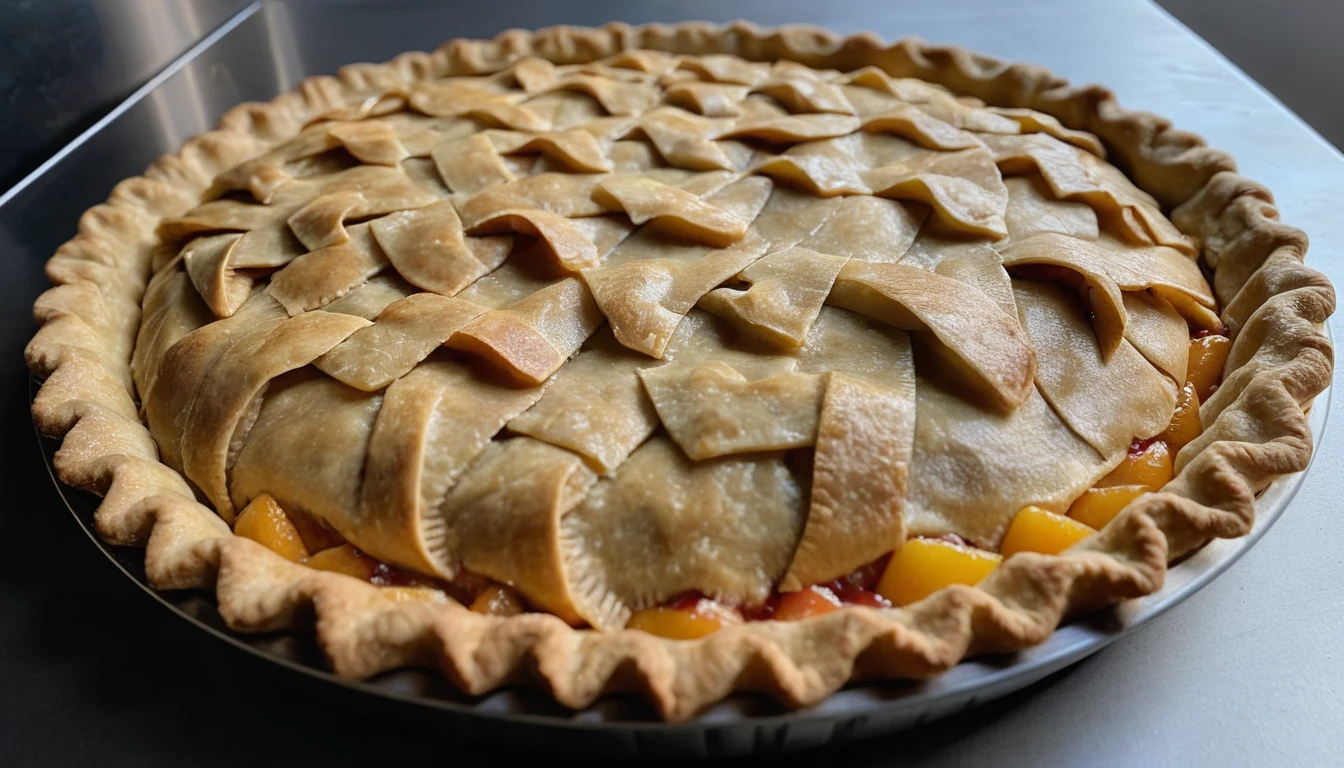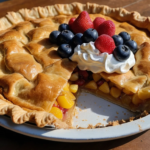When it comes to baking, few shortcuts are as convenient and reliable as Pillsbury Pie Crusts. Whether you’re a seasoned baker or just starting your culinary adventures, these pre-made crusts are a game changer. With their buttery, flaky texture and incredible versatility, Pillsbury Pie Crusts can transform any pie from average to extraordinary. Gone are the days of stressing over homemade dough—this ready-to-use crust ensures that your pie will turn out perfectly every time.
Why spend hours mixing, kneading, and chilling dough when Pillsbury Pie Crusts are right there to make your life easier? You can focus on the fun part—creating delicious fillings and assembling your masterpiece. From classic apple pie to savory chicken pot pie, these crusts are the perfect foundation for any recipe.
Beyond their practicality, Pillsbury Pie Crusts offer a taste and texture that rivals homemade versions. Light, tender, and golden brown when baked, they’re an essential item in every baker’s toolkit. Plus, they’re incredibly adaptable—you can shape them into mini tarts, rustic galettes, or traditional double-crust pies.
Whether you’re baking for a holiday gathering or simply indulging in a weekend treat, Pillsbury Pie Crusts guarantee consistent, delicious results. Once you try them, you’ll wonder how you ever baked without them. In the sections ahead, we’ll dive into why Miranda loves this recipe, share must-know tips, and walk you through creating your own perfect pie step by step.
Ready to bake? Let’s get started!
Why You Will Love This Recipe
For Miranda, Pillsbury Pie Crusts aren’t just a kitchen convenience—they’re a nostalgic ingredient that takes her back to her childhood. Miranda vividly remembers the first time she baked a pie with her grandmother. She was only eight years old, standing on a stool in her grandmother’s cozy kitchen, the warm scent of cinnamon and apples filling the air.
Her grandmother handed her a rolling pin and a store-bought crust, saying, “It’s not always about making everything from scratch. It’s about the love you put into it.” That was Miranda’s first introduction to Pillsbury Pie Crusts, and from that moment on, she was hooked. The crust baked up golden, buttery, and perfectly flaky—a magical moment that sparked her lifelong love of baking.
Years later, Miranda still turns to Pillsbury Pie Crusts for her favorite pies. As a busy chef and blogger, she appreciates how these crusts save time without compromising on taste. Whether she’s whipping up a comforting chicken pot pie or a classic cherry pie for a weekend gathering, Pillsbury Pie Crusts never disappoint.
What makes this recipe even more special is its reliability. Unlike homemade dough, which can sometimes be finicky, Pillsbury Pie Crusts are consistent and nearly foolproof. They’re ready to roll out, easy to work with, and bake into the perfect golden crust every time. For Miranda, they’ve become her secret weapon for creating simple yet memorable desserts.
Want to experience the magic for yourself? Keep reading to learn everything you need to create your own perfect pie with Pillsbury Pie Crusts.
Ingredients for the Recipe
Creating a delicious pie starts with the right ingredients, and while your filling options are endless, the key to achieving that perfect, flaky base is always Pillsbury Pie Crusts. These ready-made crusts are not only convenient but also deliver a buttery, homemade taste without the extra work. Let’s break down everything you’ll need for this recipe.
1. Pie Crust:
- The star of the show, of course, is Pillsbury Pie Crusts. You’ll need one for a single-crust pie or two if you’re making a double-crust pie or lattice-topped dessert.
2. Filling Ingredients (for a Fruit Pie):
- Fruit: Fresh or frozen fruit such as apples, berries, or peaches works beautifully. For a classic apple pie, go with tart varieties like Granny Smith.
- Sugar: Adjust the amount based on the sweetness of your fruit. Granulated sugar is most common, but brown sugar adds a deeper flavor.
- Cornstarch or Flour: This is your thickening agent to prevent a runny filling. Cornstarch yields a clear, glossy finish, while flour creates a more rustic texture.
- Lemon Juice: A splash of acidity brightens the flavors and prevents fruits like apples and pears from browning.
- Spices: Cinnamon, nutmeg, and allspice add warmth and depth to fruit fillings. Adjust to your taste.
3. Optional Toppings:
- Egg Wash: Brushing the crust with a mixture of beaten egg and water gives it that golden, bakery-style finish.
- Coarse Sugar: Sprinkle on top for an extra touch of sweetness and sparkle.
Whether you’re making a fruit pie or a savory quiche, these ingredients will help you craft a pie that looks and tastes like it came from a professional bakery. Trust Pillsbury Pie Crusts to give you that perfect base every single time. Ready to gather your equipment? Let’s dive into the tools you’ll need next!

Equipment Needed
Before you dive into baking, having the right equipment on hand is crucial for ensuring your pie turns out perfect. While Pillsbury Pie Crusts make the process easier, the right tools will help you roll, shape, and bake your pie like a pro. Let’s take a look at the must-have equipment for this recipe.
1. Pie Dish:
A good-quality pie dish is essential. You can use a glass, ceramic, or metal pan, depending on the pie you’re making. Glass pie dishes are great for monitoring how well your crust is browning, while ceramic holds heat beautifully for even baking.
2. Rolling Pin (Optional):
While Pillsbury Pie Crusts are pre-rolled and ready to go, a rolling pin can be helpful for reshaping the crust or creating decorative elements like lattice strips.
3. Pastry Brush:
A pastry brush is key for applying an egg wash to the crust. This step gives your pie that beautifully golden, glossy finish. You can also use it to brush melted butter or glaze on the finished pie.
4. Kitchen Shears or Knife:
To trim excess dough around the edges of your pie, kitchen shears are incredibly useful. A sharp knife works well for cutting slits in the top crust for venting or for creating decorative designs.
5. Parchment Paper and Pie Weights:
If you’re blind baking (pre-baking) your crust to prevent a soggy bottom, you’ll need parchment paper and pie weights (or dried beans) to keep the crust from puffing up.
6. Cooling Rack:
Once your pie is baked, it’s important to let it cool on a wire rack. This ensures even cooling and prevents the bottom from getting soggy.
Having these tools at the ready will set you up for pie-baking success. With Pillsbury Pie Crusts and the right equipment, you’re well on your way to creating a show-stopping pie. Now, let’s talk about some tips to guarantee the best results!
Tips for the Best Results
When it comes to baking with Pillsbury Pie Crusts, there are a few tricks that can take your pie from good to extraordinary. These simple tips will help you achieve that perfect golden crust, a delicious filling, and the kind of pie that disappears in minutes at family gatherings.
1. Keep the Crust Cold
One of the secrets to a flaky pie crust is keeping it cold until it goes into the oven. Even though Pillsbury Pie Crusts are pre-made, it’s still important to chill them for at least 15 minutes before baking. This helps the fat in the crust stay solid, creating those beautiful flaky layers.
2. Avoid Overworking the Dough
If you need to reshape or adjust the crust, do so gently. Overhandling the dough can make it tough and chewy rather than light and tender. Simply unroll the Pillsbury Pie Crusts and press them lightly into the pie dish without stretching.
3. Blind Bake for a Crisp Bottom
For custard pies or pies with wet fillings, blind baking (pre-baking) the crust can prevent a soggy bottom. Line the crust with parchment paper, fill it with pie weights, and bake for 10-12 minutes before adding the filling.
4. Use an Egg Wash
Brushing the crust with an egg wash (a mixture of beaten egg and a splash of water) will give your pie a golden, glossy finish. For a sweeter touch, sprinkle a little coarse sugar on top before baking.
5. Vent the Top Crust
If you’re making a double-crust pie, be sure to cut a few slits in the top to allow steam to escape.
By following these tips, you’ll be amazed at how professional your pie turns out. Thanks to Pillsbury Pie Crusts, achieving bakery-quality results at home has never been easier! Up next, let’s explore some creative ways to serve your delicious pie.

Serving Suggestions
Once your pie is perfectly baked and golden brown, it’s time to serve it up in a way that truly does it justice. Pillsbury Pie Crusts create such a flaky, tender base that you’ll want every bite to be memorable. Whether you’re preparing a dessert pie for a holiday gathering or a savory pie for a cozy dinner, how you present and pair it can make all the difference.
1. Sweet Pies:
For fruit pies like apple, cherry, or peach, serve them warm with a generous scoop of vanilla ice cream. The contrast of the warm filling with the cold, creamy ice cream is simply unbeatable. Drizzle a little caramel sauce or sprinkle some powdered sugar on top for an extra touch of indulgence.
2. Cream Pies:
When serving cream pies like chocolate, banana, or coconut cream, top each slice with a dollop of freshly whipped cream and a sprinkle of chocolate shavings or toasted coconut. Refrigerate these pies before serving to ensure they hold their shape.
3. Savory Pies:
For savory options like chicken pot pie or quiche, pair them with a light salad or roasted vegetables. Serve the pie warm, and offer a side of homemade gravy or a creamy dipping sauce for an extra burst of flavor.
4. Individual Servings:
For a fun twist, cut your pie into smaller portions and serve them in individual ramekins or jars. This works especially well for casual gatherings or picnics. Guests will love having their own personal pie!
5. Drinks to Pair:
Sweet pies pair wonderfully with coffee, hot chocolate, or a glass of dessert wine. For savory pies, serve with iced tea, white wine, or a cold beer.
No matter how you serve it, a pie made with Pillsbury Pie Crusts is guaranteed to impress. The simplicity of the crust combined with your creative flair makes every bite a delightful experience. Ready to explore some other delicious recipes? Let’s check out a few more from Our site!

Recommended Recipes
If you’re feeling inspired to explore more delightful creations beyond this Pillsbury Pie Crusts recipe, our site has plenty of other delicious options for you. Whether you want to experiment with different types of crusts or create new pie flavors, here are three related recipes that are sure to please.
- Sourdough Pie Crust Recipe – Perfect Tips & Techniques
For those who love the tangy flavor of sourdough, this unique pie crust recipe is a must-try. Learn how to incorporate sourdough into your pie-making process and elevate your crust game with helpful techniques and tips. - Butter-Free Pie Crust
Looking for a healthier or dairy-free alternative? This butter-free pie crust offers a lighter option without sacrificing flavor or texture. It’s ideal for those who prefer a different fat base for their crusts. - Chocolate Pie with Graham Cracker Crust
This indulgent recipe combines a rich chocolate filling with a crunchy graham cracker crust. Perfect for chocolate lovers, this pie is simple to prepare and makes a show-stopping dessert.
Each of these recipes offers a unique twist on traditional pies, giving you new ways to experiment in the kitchen. Whether you’re perfecting your pie crust skills or exploring new flavors, these recipes will inspire you to get creative. Ready for a few additional tips and tricks? Let’s move on to the notes section!
Notes
When working with Pillsbury Pie Crusts, there are a few additional things to keep in mind to ensure your pie turns out perfectly every time. These little details can make a big difference in the final result, whether you’re baking a sweet pie or a savory masterpiece.
1. Storage Tips:
If you have leftover Pillsbury Pie Crusts, it’s important to store them properly to maintain freshness. Keep unused crusts in their original packaging and refrigerate them for up to two weeks. For longer storage, you can freeze them. When you’re ready to use them, allow the crust to thaw in the refrigerator overnight.
2. Make-Ahead Tips:
Want to save even more time? You can prepare your pie in advance and refrigerate it until you’re ready to bake. This is especially useful for holiday gatherings or when you need a dessert on short notice. Prepping ahead doesn’t compromise the flakiness of Pillsbury Pie Crusts.
3. Substitution Ideas:
While Pillsbury Pie Crusts are incredibly versatile, you can switch things up by experimenting with other crust options like graham cracker or phyllo dough for different textures and flavors. These substitutions work well for cheesecakes or tarts but may not provide the same flaky layers that Pillsbury Pie Crusts offer.
4. Baking Temperature:
Most pies bake best at 375°F to 400°F. If the edges start to brown too quickly, cover them with aluminum foil or a pie shield to prevent burning while the center continues to bake.
By keeping these notes in mind, you’ll be well-prepared to handle any pie-baking challenge. Remember, the key to success lies in small details—and with Pillsbury Pie Crusts, even the simplest pies can become something extraordinary.
Next up: let’s answer some frequently asked questions!
FAQ
Here are some common questions people ask when using Pillsbury Pie Crusts. These answers will help you achieve the best results and avoid common pie-baking pitfalls.
1. How do you keep the crust from getting soggy?
A soggy bottom crust is a common issue, especially with fruit pies. To prevent this, try blind baking the Pillsbury Pie Crust before adding the filling. Blind baking involves pre-baking the crust for about 10 minutes with parchment paper and pie weights. Another trick is to brush the crust with egg white or sprinkle a thin layer of breadcrumbs to create a barrier between the crust and the filling.
2. Can I freeze Pillsbury Pie Crusts?
Yes! Pillsbury Pie Crusts can be frozen for up to two months. Just make sure they’re tightly wrapped in plastic and placed in a freezer-safe bag. This is a great way to always have a pie crust ready for impromptu baking sessions.
3. Do I need to pre-bake the crust for custard or cream pies?
Yes, blind baking is essential for pies with custard or cream fillings. This ensures the crust is fully cooked and maintains its structure when filled with soft or no-bake fillings.
4. Are Pillsbury Pie Crusts suitable for savory pies?
Absolutely! Pillsbury Pie Crusts are perfect for savory dishes like quiches, chicken pot pie, and meat-filled pastries. Their buttery flavor complements both sweet and savory ingredients.
5. How do I get a golden, glossy crust?
For a beautiful golden finish, brush the top crust with an egg wash (a beaten egg mixed with a splash of water) before baking. If you want a sweeter crust, sprinkle some coarse sugar on top after the egg wash.
6. How long do Pillsbury Pie Crusts last in the refrigerator?
Unopened Pillsbury Pie Crusts typically last up to two weeks in the refrigerator. Once opened, it’s best to use them within a week for the best texture and flavor.
Conclusion
Baking a pie is more than just following a recipe—it’s about creating something that brings people together and stirs up cherished memories. For Miranda, every time she bakes with Pillsbury Pie Crusts, it takes her back to that magical day in her grandmother’s kitchen. The smell of fresh-baked pie, the warmth of the oven, and the joy of tasting the first slice are all reminders of the simple yet profound pleasures of baking.
The first time Miranda made a pie with her grandmother, she felt an overwhelming sense of pride and accomplishment. Sure, it wasn’t perfect—the edges were uneven, and the filling bubbled over—but none of that mattered. It was the love and laughter shared in the process that made it special. Her grandmother’s words stuck with her: “It’s not about perfection. It’s about creating something from the heart.”
That’s why Pillsbury Pie Crusts have remained a staple in her kitchen. They make baking accessible, allowing her to focus on what truly matters—spending time with loved ones and creating sweet moments that last a lifetime.
So, whether you’re an experienced baker or trying your hand at pie-making for the first time, give this recipe a try. Roll out your Pillsbury Pie Crust, add your favorite filling, and let the magic unfold. Who knows—you might just create a memory as sweet and comforting as the pie itself.
Go ahead, preheat that oven, and get ready to experience the joy of homemade pie with a little help from Pillsbury Pie Crusts. You won’t regret it!
Print
Pillsbury Pie Crusts Recipe
- Total Time: 35 min
Description
Learn how to make the perfect pie using Pillsbury Pie Crusts with our detailed step-by-step guide and tips for success.
Ingredients
- Pillsbury Pie Crusts,
- Fruit filling,
- Sugar,
- Butter,
- Cornstarch,
- Lemon juice,
- Egg wash
Instructions
- Preheat oven to 375°F.
- Roll out the Pillsbury Pie Crust and shape it into a pie pan.
- Blind bake for 10 minutes using parchment paper and pie weights.
- Add fruit filling and bake until golden brown.
- Cool before serving.
Notes
For best results, chill the crust before use.
- Prep Time: 15 min
- Cook Time: 20 min

